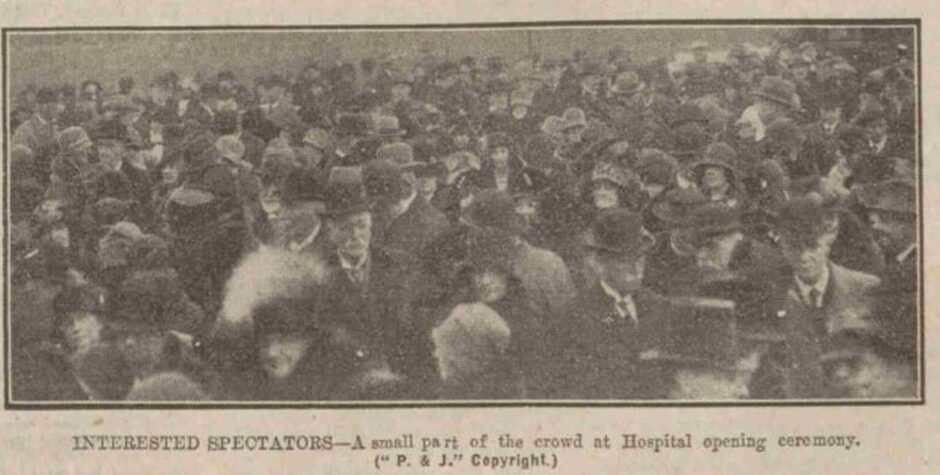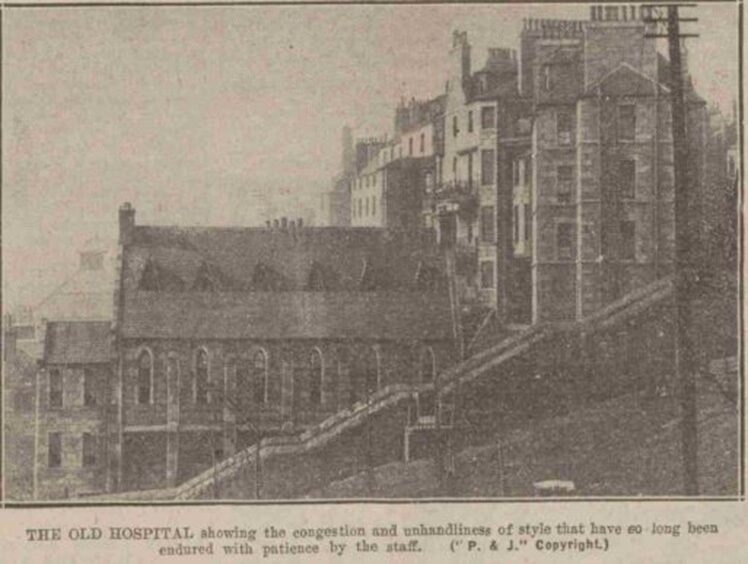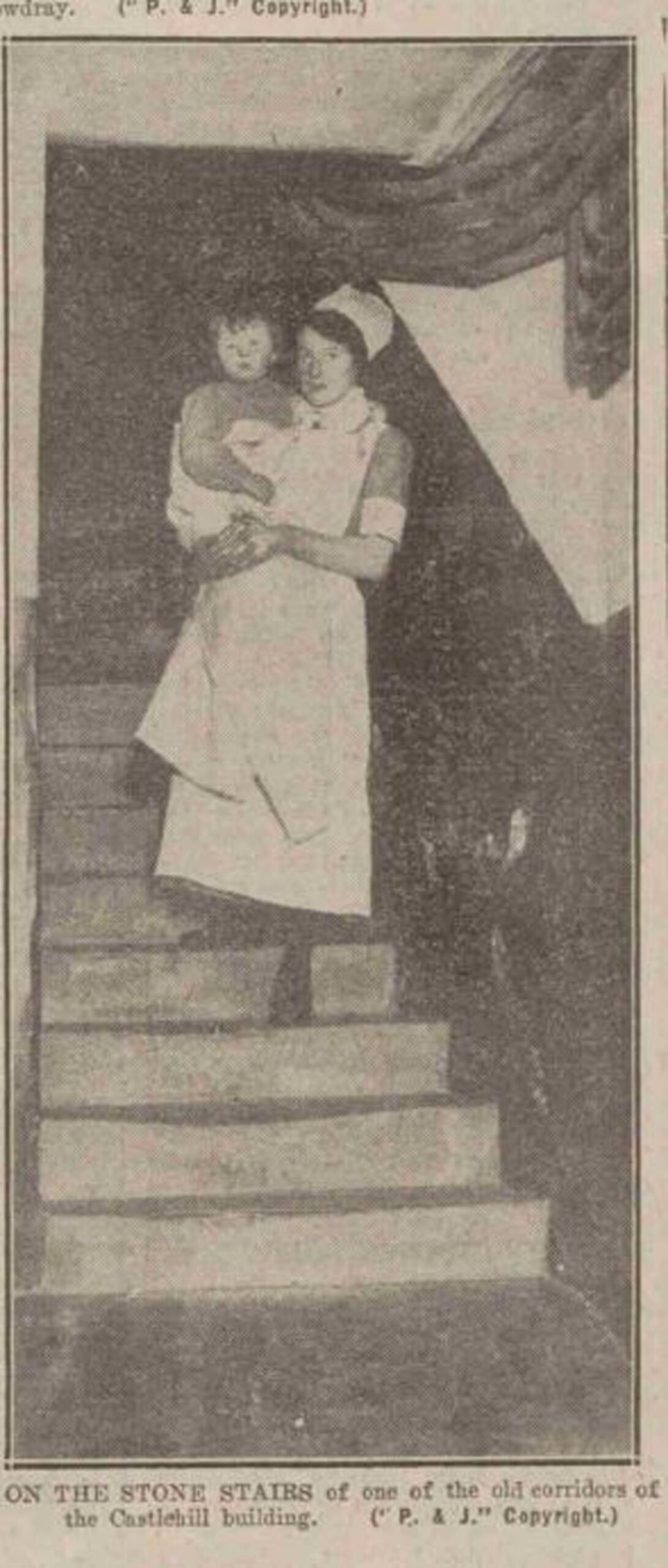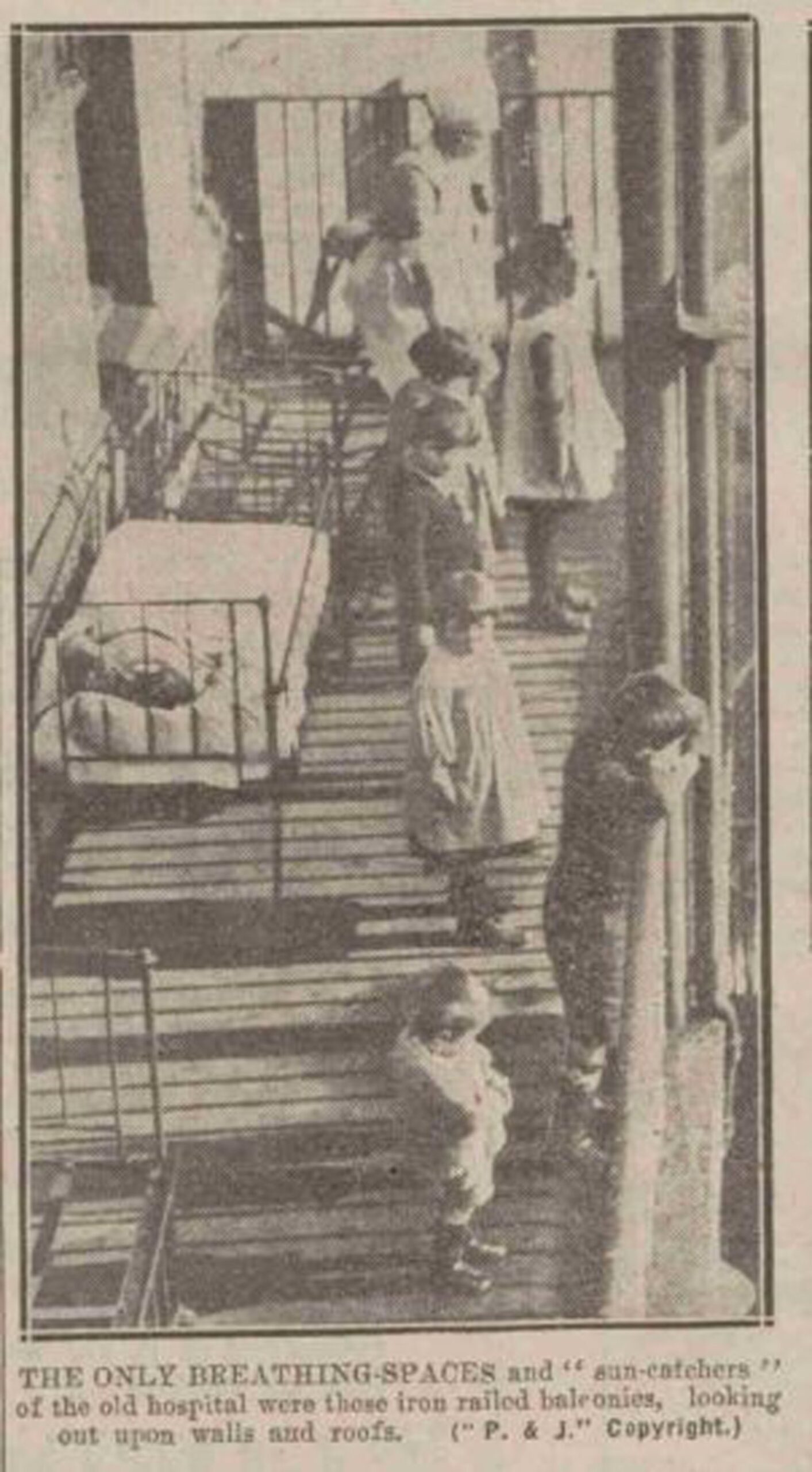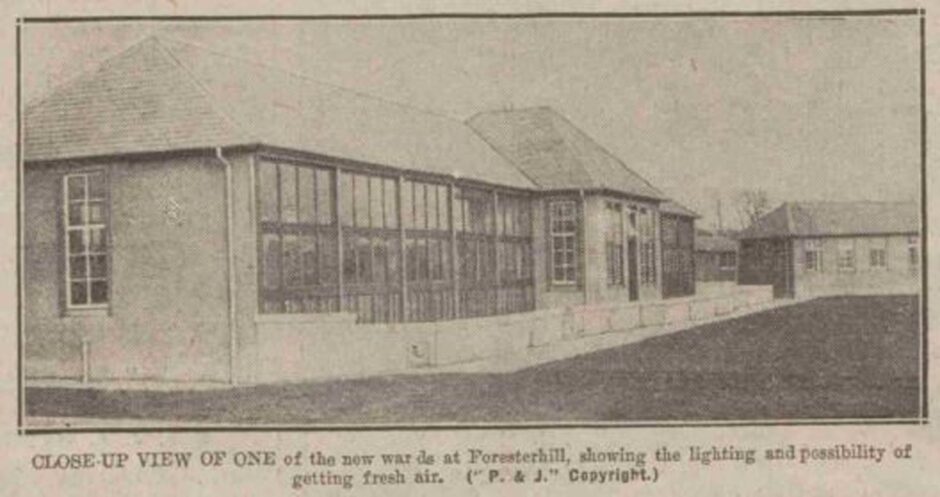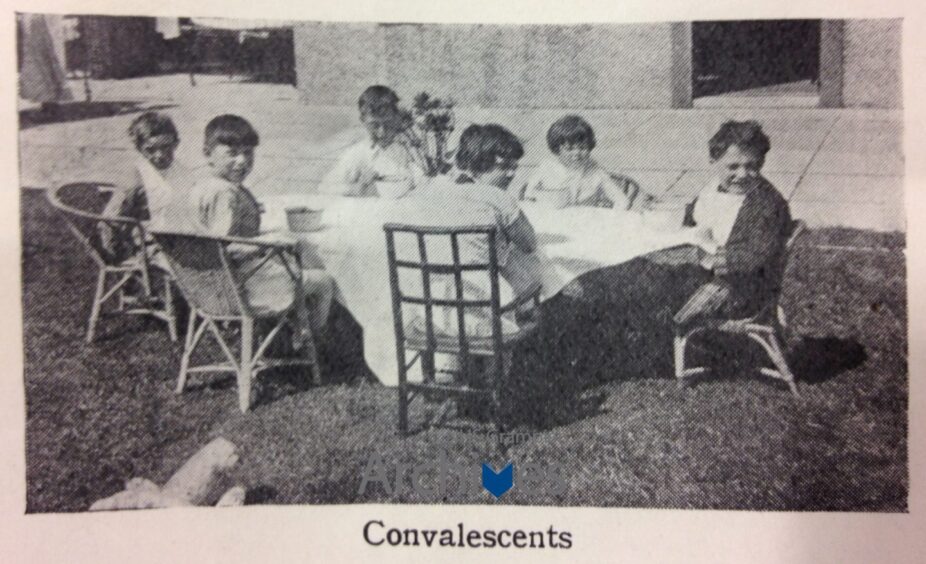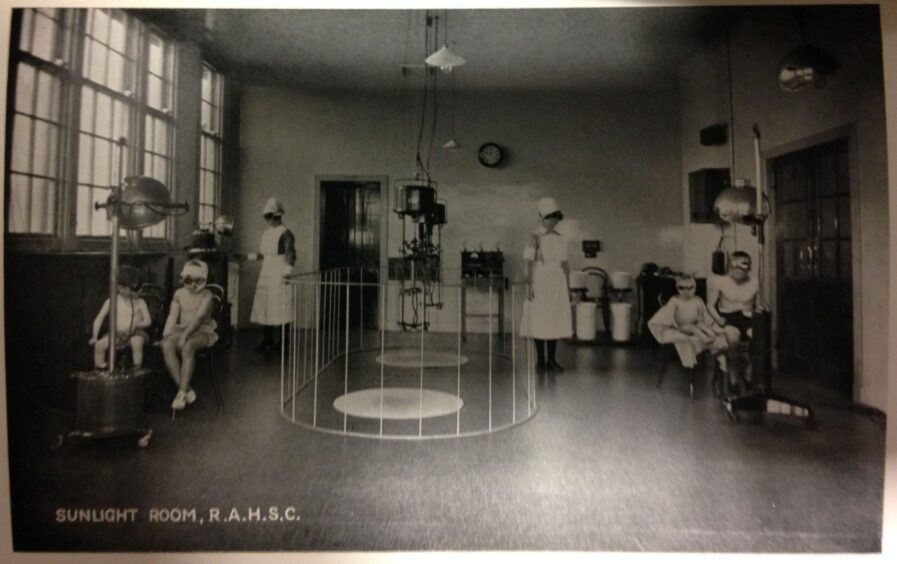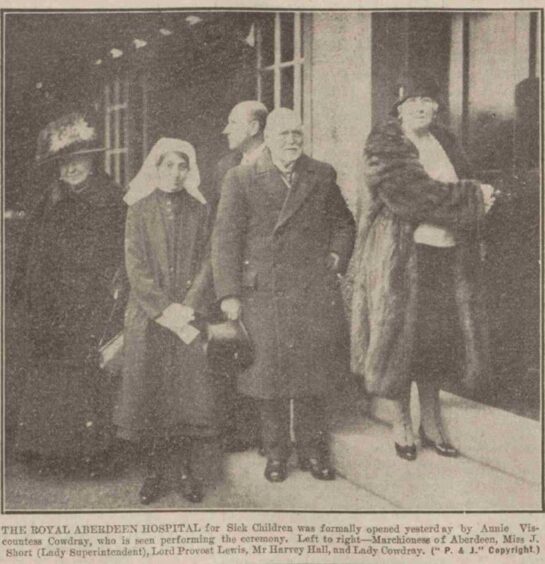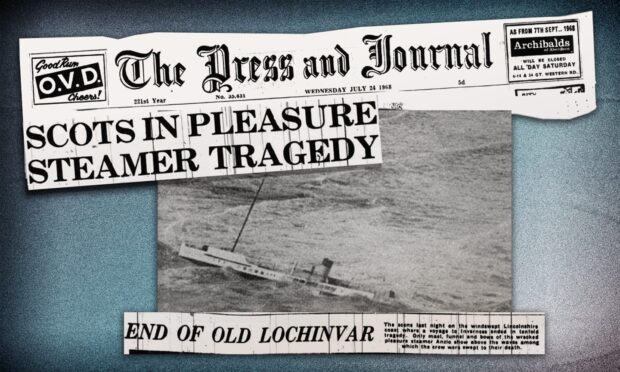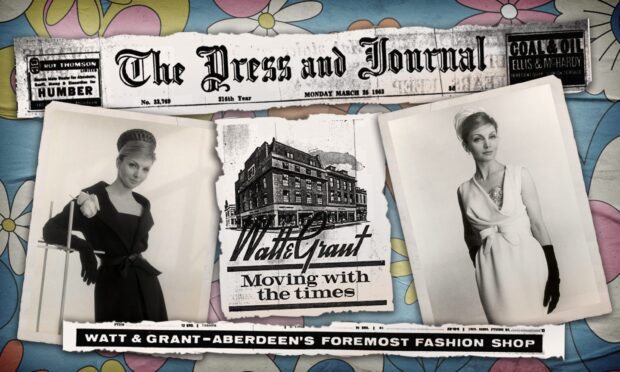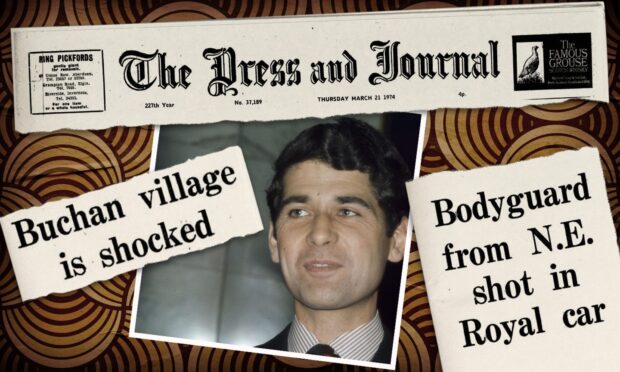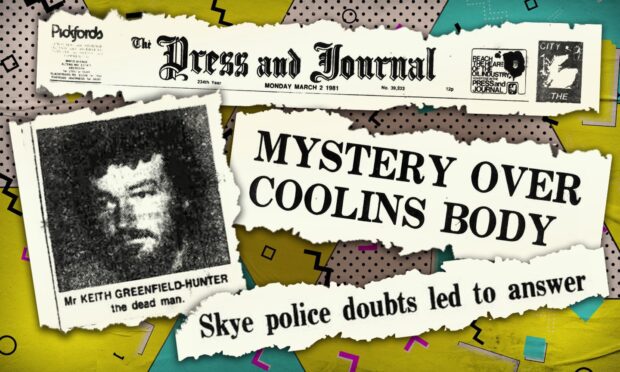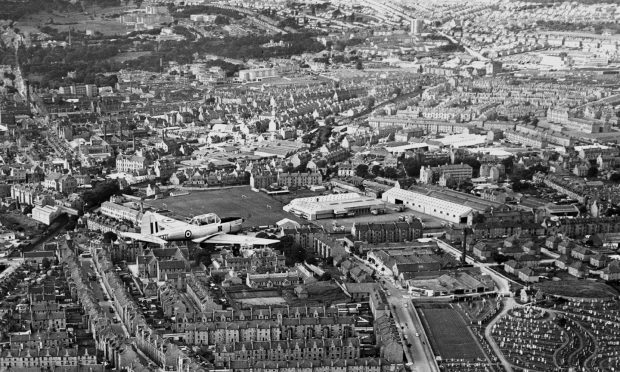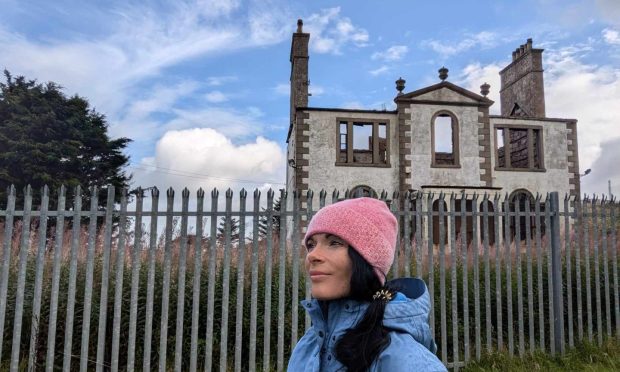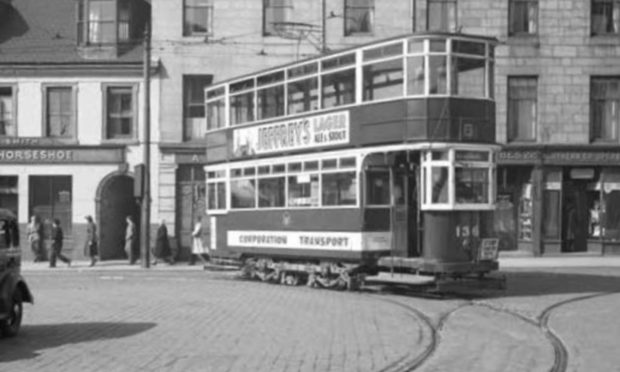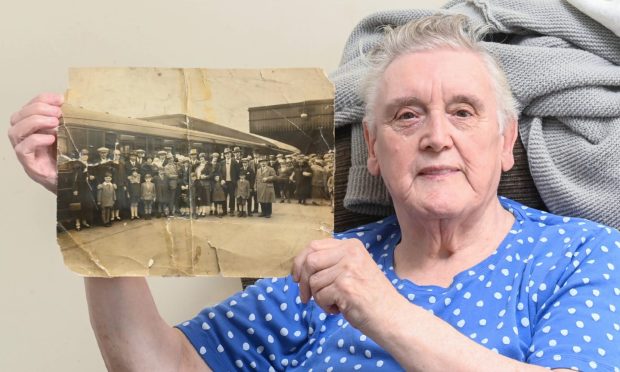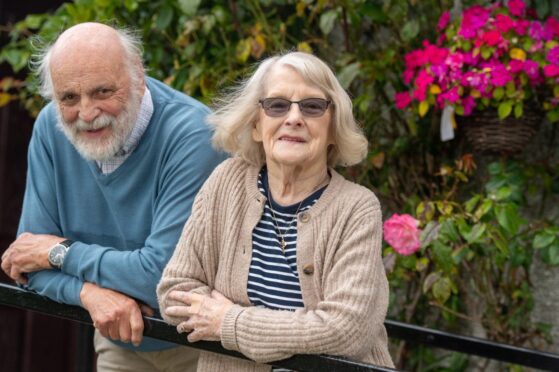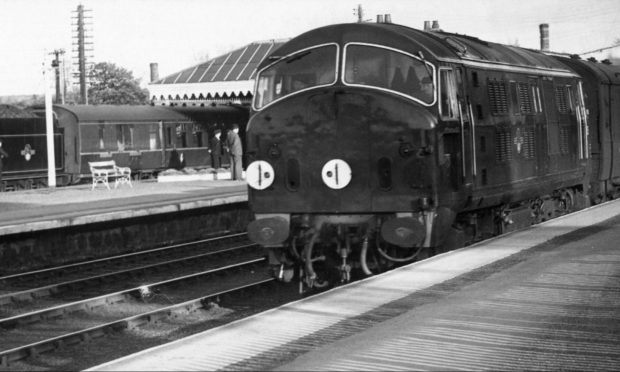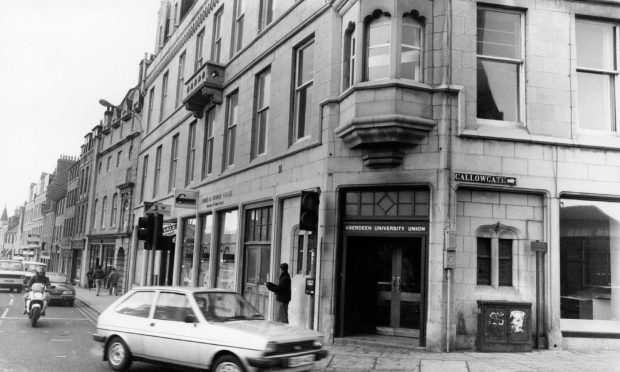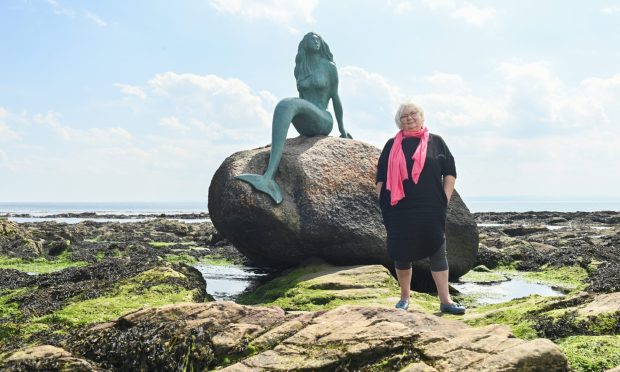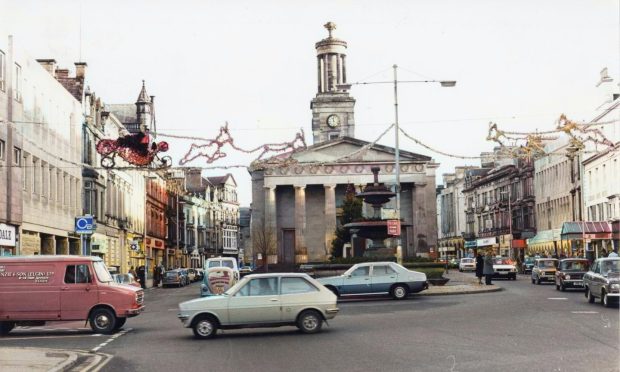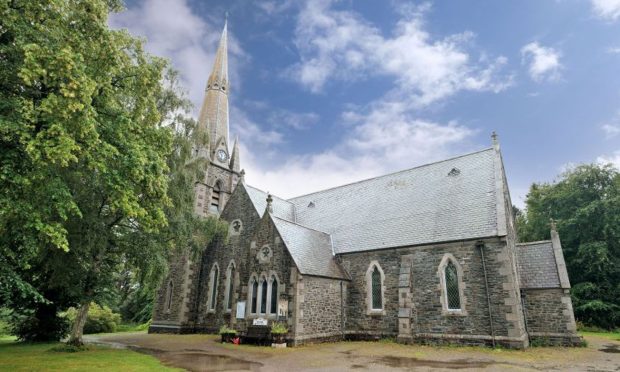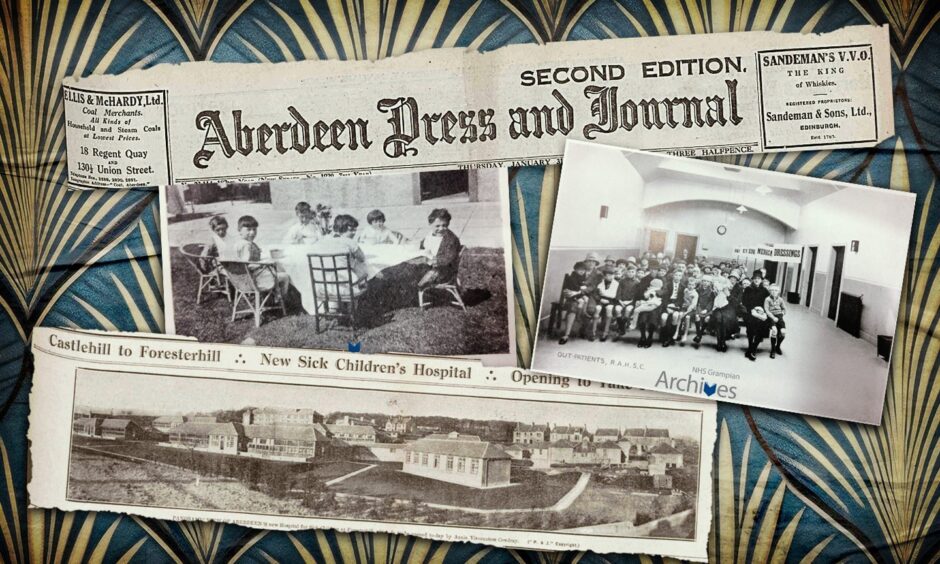
Huge crowds gathered for a significant milestone in Aberdeen’s health care history on this day in 1929.
Our archives reveal a buzz of excitement at the opening of the much-needed replacement for Aberdeen’s first children’s hospital which opened in 1877 and was well past its use-by date.
The idea of a hospital for children in the city had first been mooted at a meeting in 1870, and money-raising began through private donations.
It would be seven more years before the first board of directors was appointed, and a building was scouted out.
First hospital was in a tenement…with just 14 beds
This was a two-storey tenement house in Castlehill, at first rented due to the directors’ sense of caution, not knowing how their institution would turn out.
They even allowed tenants to stay on the first floor, while the ground floor was fitted out for its new use.
A modest 14 beds were installed – compare that with 85 in the latest incarnation- and in September 1877, the first patients were admitted.
The P&J reported: “With poverty prevailing in the east-end of the city, and housing conditions much worse than they are now, the hospital was a heaven to the little sufferers brought in, all the more so as the directors in the aims and objects set forth in the constitution which they drew up included the following:
“ To awaken the affections of the heart by surrounding the patients with acts of kindness, the recollection of which they will carry home with them; and thus to exercise a beneficial influence on themselves and their relatives and friends. “
With this mission statement behind it, the hospital quickly took a firm hold on the city’s affections.
The following year, faced with the need to expand, the directors bought the building for £1850, around £276,000 in today’s money.
The site continued to expand.
In 1886 an additional piece of ground was purchased, and a nurses’ and servants’ home were built at a cost of £3000.
Up to the end of 1925, the hospital had treated 22,000 in-patients and 74,000 out-patients, and the need for bigger and more appropriate premises had been abundantly clear for some time.
The directors decided £70,000 was needed, more than £10 million today and once again, private donations and subscriptions were the only source.
Faced with this mammoth task, Aberdeen’s Lord Provost James Taggart stepped up with an intense campaign and raised £11,000 from the citizens.
By the outbreak of World War One £20,000 had been raised, but the campaign was compulsorily suspended for the war effort.
Initially a site had been scoped at Ashley Road, but this was later dropped in favour of 16 acres at Foresterhill.
Private individuals in Aberdeen contributed massive amounts to fund the new hospital.
Lord and Lady Cowdray contributed the equivalent of £383,000, while a Mr and Mrs J Herbert Taylor of Rhu-na-Haven, Aboyne gave more than double that.
The foundation stone was laid on October 29, 1926, and over the next three years what the P&J described as ‘a group of handsome buildings’ emerged.
The children’s hospital was also conceived as the forerunner of the Joint Hospital’s Scheme, the result of which is Aberdeen’s now huge and complex medical hub.
Foresterhill Sick Children’s Hospital could accommodate 134 children, in four wards, along with an isolation ward for six patients.
The main wards had the all-important open balcony at the front, fresh air and sunshine being deemed crucial for health in general and particularly for recuperation.
It was the last word in progress, boasting steam-sterilising equipment, an electrical treatment department, dark room, laboratory, gymnasium, an out-patient department, plenty of examination rooms and an operating room, not to mention kitchens, playrooms and dressing rooms.
“The new institution is equipped with all the latest surgical and medical appliances for dealing, in an expeditious and efficient manner, with all the numerous ailments and accidents to which so many children of the present day are, unfortunately, subject,” wrote the P&J.
Heating came from hot water radiators ‘on the low pressure system’.
There was also generous allowance made for administrative buildings, and an accommodation block for 47 nurses and ten Sisters.
The work was designed and carried out by architects Kelly & Nicol of Aberdeen.
Annie Viscountess Cowdray opened the building, and was presented with a gold souvenir key.
The crowds were allowed to walk around the building after the ceremony, and a week later, the first patients were admitted.
The St Andrew’s ambulance, a fleet of taxis hired for the occasion and cars lent by members of the committee ran continuously between Castlehill and Foresterhill the lengtho f the day.
The old Castlehill hospital was sold to Councillor Donald of Donald’s Cinemas and for some years was used to store cinematic equipment.
It was bought in 1938 by Alexander W Hunter and would became known to generations of Aberdeen bargain-hunters as Cocky Hunters, surviving until 1973 when it was closed and demolished to make way for the new ring road.
Seventy-five years on, the next milestone
There’s also another important anniversary in Aberdeen’s care of sick children this week.
Fast forward 75 years, and the current facility, Royal Aberdeen Children’s Hospital at Westburn Road opened on January 25, 2004.
More from our On This Day series:
